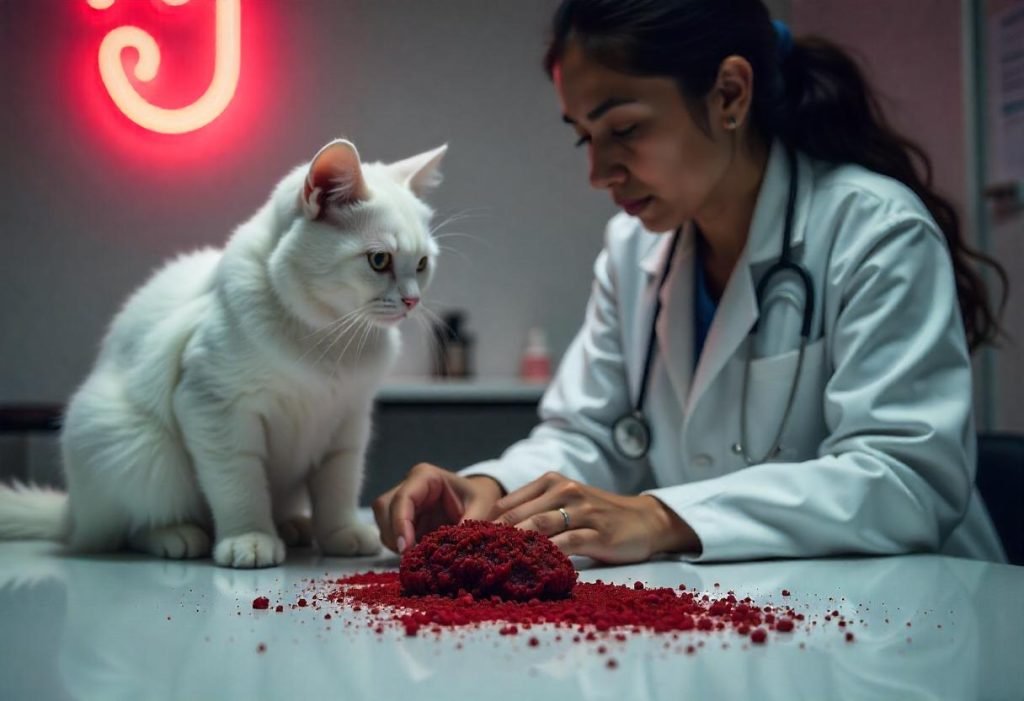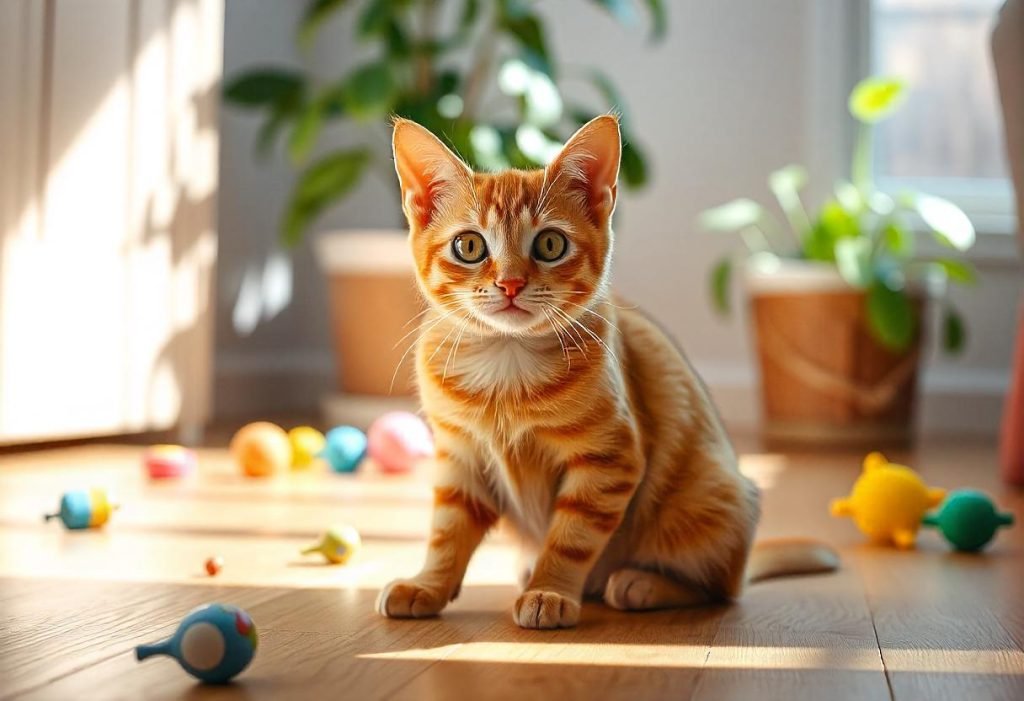Every cat owner loves to pet their furry friend and enjoy their soft, warm fur.
But what happens when you feel your cat and notice they’re unusually warm? You might find yourself worried, wondering what’s going on and why does my cat feel hot to touch how to help.
Why is a Warm Cat a Concern?
A cat feeling warm to the touch can be a sign of a variety of conditions, ranging from simple overheating to serious medical problems.
It’s important to pay attention to your cat’s temperature and look for any other concerning symptoms.
Understanding a Cat’s Normal Body Temperature
A normal temperature for a cat is typically between 100.5 and 102.5 degrees Fahrenheit. A temperature above this range is considered a fever.
While a warm cat might not always indicate a fever, it can be a signal that something isn’t quite right.
Common Causes of a Warm Cat
Here are some common reasons why does my cat feel hot to touch:
- Fever: Fever, or hyperthermia, is a common sign of illness in cats. It’s a natural defense mechanism, but it can be a sign of a serious health problem.
- Overheating: Cats can overheat, especially during hot weather or if they’re confined to a small space.
- Exercise: A cat that has been playing or exercising might have warmer ears due to increased blood flow to the surface.
- Infections: Infections can also cause a cat’s ears to be warm. This is especially common with ear infections or skin infections in the ear area.
- Inflammation: Inflammation of the ears, such as from allergies or trauma, can cause increased blood flow and warmth in the ears.
- Underlying Medical Conditions: Certain medical conditions, such as hyperthyroidism, infections, and even some forms of cancer, can cause an elevation in body temperature.
Recognizing Other Signs of Illness
While warm ears might be a sign of a fever, pay close attention to any other signs that might accompany it. These could indicate a more serious problem.
- Lethargy: If your cat is not eating, it’s a big red flag, especially if it’s accompanied by a fever coat.
- Vomiting: Forceful expulsion of contents from the stomach.
- Diarrhea: Loose stool.
- Difficulty Breathing: Labored breathing or gasping for air.
- Changes in Urination: Difficulty urinating or urinating more frequently.
- Changes in Behavior: Sudden increase in vocalization, hiding, aggression, or changes in personality.

A Case Study: Whiskers’ Warm Ears and Fever
Whiskers, a 6-year-old Maine Coon, was acting lethargic and didn’t seem interested in eating.
His owner, David, also noticed that Whiskers was breathing more rapidly than usual. “It was unusual for Whiskers to be so quiet,” David says. “He’s normally a very playful cat, but he just wanted to sleep.”
David took Whiskers to the vet, and the veterinarian performed a physical exam and checked his temperature.
The veterinarian found that Whiskers had a fever. “We need to run some blood tests and X-rays to find out what’s causing the fever,” the veterinarian explained.
The blood tests and X-rays revealed that Whiskers had an upper respiratory infection. The veterinarian prescribed antibiotics, and Whiskers’ fever coat subsided after a few days.
Diagnosing Why Your Cat’s Ears Are Hot
Diagnosing the cause of warm ears in cats requires a thorough examination by a veterinarian.
They will perform a physical exam, ask about your cat’s history, and often recommend some additional testing.
- Physical Examination: The veterinarian will assess your cat’s overall health, including their weight, body condition, and any signs of illness. They will check your cat’s temperature, pulse, and respiration, and they will examine their eyes, ears, nose, teeth, and gums. They will also feel your cat’s abdomen and lymph nodes for any abnormalities.
- Bloodwork: Blood tests can help identify various medical conditions, including infections, kidney disease, liver disease, and diabetes.
- Urinalysis: A urinalysis can detect urinary tract infections, kidney problems, and other conditions.
- Radiographs (X-rays): X-rays can be used to examine bones, organs, and other structures, helping to diagnose a variety of conditions.
- Ultrasound: Ultrasound uses sound waves to create images of internal organs, providing a detailed view of the organs and surrounding structures.

Treating a Cat with a Low Body Temperature
Treatment for a cat feeling cold depends on the underlying cause.
- Fever: If your cat has a fever, your veterinarian may recommend:
- Antibiotics: Antibiotics are used to treat bacterial infections.
- Anti-Inflammatory Medications: Anti-inflammatory medications can help reduce inflammation and pain.
- Fluids: Fluids are often given intravenously to help combat dehydration, a common complication of fever and illness.
- Supportive Care: Cats with a fever often require supportive care, such as pain medication and nutritional support.
- Overheating: If your cat is overheating, your veterinarian may recommend:
- Cooling Down: Gradually cool your cat down by placing them in a cool, shaded area, offering them cold water to drink, or using a cool compress on their ears, neck, and paws.
- Fan: Using a fan to circulate air can also help cool your cat.
- Ear Infections: Ear infections are often treated with topical medications or oral antibiotics.
- Allergies: If allergies are the cause of warm ears, your veterinarian might recommend:
- Environmental Control: Minimize exposure to the offending allergen.
- Antihistamines: Antihistamines can help reduce itching and inflammation.
- Corticosteroids: Corticosteroids are potent anti-inflammatory medications that can help reduce itching and inflammation, but they can have side effects.
- Immunomodulators: Immunomodulators can help suppress the immune system’s response to allergens, reducing allergy symptoms.
How to Reduce Fever in Cats
While it’s important to seek veterinary care for your cat’s fever, there are some things you can do at home to help make them more comfortable:
- Keep Them Hydrated: Make sure your cat has access to fresh water. You can encourage them to drink by using a water fountain or adding water to their food.
- Warm Environment: Provide a warm, comfortable environment for your cat. You can use a heating pad or a warm blanket to help keep them cozy. Avoid using direct heat sources, such as a hairdryer or a heating pad on high, as this can cause burns.
- Rest: Allow your cat to rest in a quiet, dark, and comfortable space.
A Case Study: Whiskers’ Fever Recovery
Whiskers, the Maine Coon with a fever, responded well to treatment. He received antibiotics, fluids, and pain medication.
David followed the veterinarian’s instructions for providing him with supportive care, including a quiet, comfortable space to rest, fresh water, and a bland diet. After a few days, Whiskers’ fever went down, and he started to feel better.
“Whiskers was back to his playful self after a few days,” David says. “It was a relief to see him feeling better.”
Conclusion
A cat feeling warm to the touch can be a sign of a variety of conditions, but it’s important to remember that your cat is still your loving companion.
By understanding the causes and seeking professional help, you can help your cat receive prompt veterinary care and increase their chances of a good outcome.


















